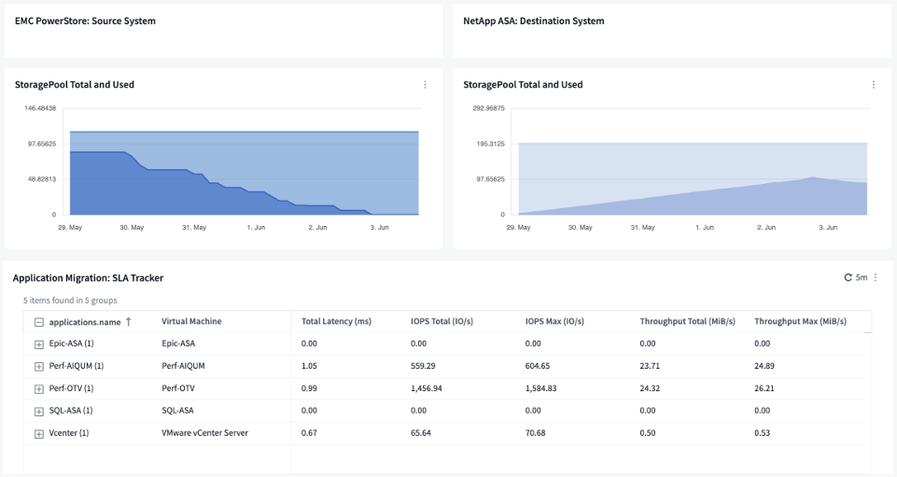Storage Area Networks (SAN) and block storage are critical components of modern IT infrastructure, serving as the data backbone of many organizations.
This infrastructure continues to be prevalent in the market for mission critical workloads, with analysts predicting its usage continuing to grow through 2035 and beyond. This sustained relevance is largely due to its dependable nature. In conversations with dozens of SAN users, the consensus is clear: “It does the job, it's reliable, we barely ever have to touch it, and we try to avoid changes due to risk”
However as reliable as these platforms and networks are, they aren't immune to the passage of time. Eventually, they reach the end of their serviceable life and must be retired — a prospect that often fills storage operations teams with dread: the storage refresh.
These storage refresh projects are a stressful time for the ITOps teams completing them. Understandably, there are concerns over availability and performance during the migration window – these are usually mission critical applications after all. There's an inherent risk in performing cutovers, and storage administrators are keenly aware of this. To ensure these migrations proceed smoothly, it's essential to leverage observability tools that provide visibility into risks needing remediation and maintain consistent tracking of service levels throughout the migration process.
In a previous blog Addressing the Challenges of SAN Storage Refresh, I outlined various key steps with Cloud Insights to tackle these challenges. Yet, another significant challenge warrants attention — one that might not be immediately apparent: stakeholder management.
To application owners and business stakeholders, storage refresh projects can seem like a disruptive, risk-laden activity, with anxieties exacerbated by a lack of visibility into what’s happening behind the scenes. Additionally, project management teams require continuous updates, placing further demands on storage teams.
Recalling my own work on migration projects in past roles, as much as half of my time was taken up by reporting – gathering metrics and capacities and explaining those to the project managers, filling in the spreadsheet and updating on regular sync meetings. And because many of the migration events were out of business hours, this time reporting was, too. If only I had a way to give these stakeholders the information they needed without having to take up my time in doing so!
Self-service management views in Cloud Insights
The task of providing non-technical stakeholders with regular updates and responding to report requests during migration projects can be time-consuming for storage teams, whose expertise is better utilized managing the technical aspects of the migration.
A surprising revelation from discussions with many users is the continued reliance on Excel as a reporting and tracking “tool” for migrations. Why does this antiquated practice persist? The difficulty lies in comparing disparate systems. With varying architectures, terminologies, and performance metrics between the outgoing and incoming platforms, presenting information in a way that is comprehensible to non-technical stakeholders involves manually normalizing data from multiple platforms and removing unnecessary detail confusing to these stakeholders.
Cloud Insights is a heterogeneous, ITOps platform with uses far and wide for technical and non-technical stakeholders alike. This includes advanced troubleshooting, capacity planning, reporting, data security, auditing and more.
Cloud Insights addresses this particular challenge for storage refresh by providing customizable self-service dashboards and views. And because it’s a read-only tool – a level of access can be given to project management personnel that just isn’t possible with storage element management tools – with dashboards that curate the information to only what’s need-to-know, and avoid metrics overload. And because Cloud Insights' data model is inherently consistent across all platforms and vendors, there’s no need for manual normalization of the data.
These dashboards can be tailored to present relevant data in an easily understandable format, enabling stakeholders to check the status of the project at their convenience, without the need for technical intervention. This example dashboard provides a straightforward and self-service update for overall project status, with a high-level overview of data migration status across source and destination systems and a simple tracker of application performance.

Additional application-level status reports, highlighting consumption, service level compliance and migration status can be provided directly to application owners, reducing not only toil on the storage team, but also on the project management team in distributing this information. This not only improves transparency and trust but also allows storage teams to focus on the technical aspects of the refresh project without being sidetracked by frequent reporting requests.
The use of Cloud Insights views like this translates into several tangible benefits for storage administrators and business stakeholders:
- Time-Saving: Storage teams save valuable time by reducing the frequency and time consumed by status meetings and one-on-one updates, allowing them to concentrate on the technical migration tasks.
- Empowered Decision-Making: With direct access to relevant data, stakeholders can make quicker, more informed decisions without the lag of communication.
- Reduced Miscommunication: Presenting data in a standardized, visual format minimizes the risk of misunderstandings that can occur when translating technical information for a non-technical audience.
By integrating Cloud Insights into their workflow, storage teams can not only navigate the technical challenges of a SAN refresh with greater ease but also streamline the communication process with stakeholders, leading to a more efficient and less stressful project for all involved.
To find out more about how Cloud Insights can help your both technical, and non-technical users alike, head over to https://www.netapp.com/cloud-services/cloud-insights/